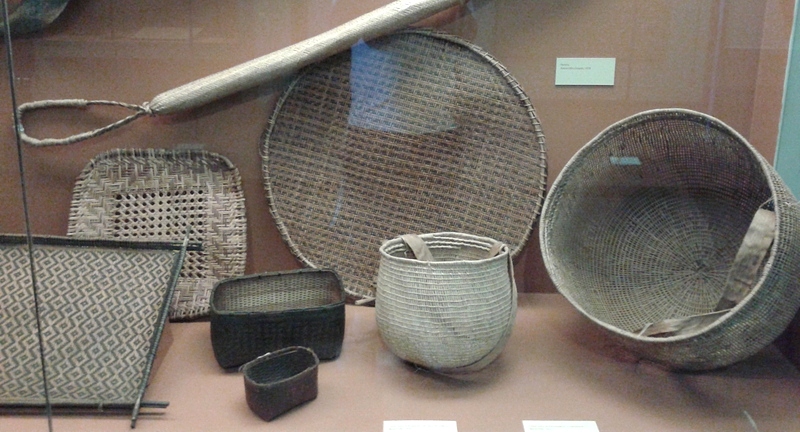LatinaLista —
Campaign: Reconnecting Indigenous Collections to their Source Communities
How do artworks wind up on museum walls? How are objects chosen for display and who makes such decisions? What individuals/groups are highlighted in these exhibitions?
When Indigenous objects are put on display, they often lack the voice of the very communities who produced them. Undergrad student Sydney Collins will explore how museums exhibit and interpret Indigenous material culture, and advocate for a more multidimensional museum that more accurately portrays the diverse experiences shaping our past, present, and future.
For over a year now, Collins has interned at the Kluge-Ruhe Aboriginal Art Collection, and has rigorously worked on digitizing every object in the collection. As the digital photographs amassed on the museum’s private server, she began to consider the potential of these virtual objects.
Her internship inspired her to peruse an Art History Thesis, in which she is investigating how digital art surrogates can more effectively interact with their source communities to ultimately change the relationship between these two parties.
Her research in Quebec museums will allow her to pursue this line of inquiry and further examine to what degree they respond to Clifford’s “contact zone”, promoting “active collaboration and sharing of authority”.
What is the significance of this project?
Haunted by their colonial pasts, museums often avoid the complex and troubled histories that tend to accompany Indigenous objects and instead illustrate a more homogenous, nationalistic identity. Through studying Indigenous exhibitions in Quebec, she hopes to develop ways in which museums can more accurately reflect the plurality of these cultures’ artwork and objects.
Reconnecting collections to their Indigenous source communities grants Native people their rightful input in how they want to be represented to the wider public, and extends a lateral set of narratives that may have gone untold otherwise. Creating a museum that fully demonstrates the diverse set of narratives connected to Indigenous objects promotes appreciation for all the unique threads that make up the rich human experience.
What are the goals of the project?
Collins will begin her research on January 3rd, 2016. She will visit seven museums during her stay in Quebec, including: Musée de la civilization, the McCord Museum, and Pointe-a-Calliere. While there, she will study the layout and design of the exhibition spaces. She will investigate if and how Indigenous communities were involved in development of the exhibition.
She is interested in how Indigenous perspectives, or lack thereof, shape the exhibition’s overall message. She will also determine how all of these various components work together to construct diverse histories and identities in a contemporary context. The data collected at each of these museums will further serve as essential comparisons to Indigenous collections here in the U.S.
The Budget
Collins’ budget outlines the essential costs of traveling and living in Quebec for 14 days. This trip will allow her to study the exhibition spaces inside various museums, as well as talk with the museum professionals behind the displays. Not only will her research enhance her understanding of the processes of developing these exhibitions of Indigenous art, but it will also bolster the scope of her Senior Art History thesis. This trip allows her to expand her exhibition case studies to an international level, which will ultimately produce more comprehensive results on Indigenous museum collections.
The trip is crucial to her research project as the museum and exhibition case studies available to her now are limited by her geographic location. Understanding the value of this trip to her overall research project, she has taken out a student loan to temporarily ease the financial burden. Any funding she receives will go directly towards offsetting the debt that she will have to repay upon graduation.
The campaign’s goal is $2,700.



